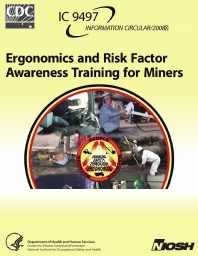 |
Ergonomics is the science of fitting the work task to the user. It seeks to prevent serious injury by considering designs that accommodate the abilities and limitations of people. Many workers perform tasks that involve exposure to ergonomic risk factors. Musculoskeletal disorders (MSDs) resulting from such exposure account for one-third of all occupational injuries and illnesses reported to the U.S. Bureau of Labor Statistics. MSDs are a type of injury that can take a long time to develop (i.e., they are a cumulative type of injury) and are associated with more lost time and higher compensation costs than other types of injuries. Exposures to risk factors can lead to the development of permanent, disabling injuries, and illnesses that may prevent workers from returning to their jobs and performing simple tasks that are part of their everyday routine. Reducing and eliminating risk factors will lead to healthier employees. Ergonomics is about putting "people first." It is a way to better match tools, equipment, and work methods with workers. The application of ergonomics should be practical. It should benefit workers through better task designs and work procedures. Increasing the awareness of mining personnel to the benefits of applying ergonomics allows both management and employees to work together to gain significant benefits to worker health. Research has shown that ergonomics is most successful when it is approached as a participatory process-management and employees working together to modify job tasks, including equipment, tools, environment, and methods. The first step toward achieving a participatory process is to give employees knowledge of ergonomics and how it can be used to align their jobs to their abilities. The overall objective of Ergonomics and Risk Factor Awareness Training is to help reduce injuries and illnesses resulting from exposures to risk factors. Specifically, this training will increase awareness of risk factors and encourage miners to take action to report and reduce their exposures to risk factors.
| Author(s): | Torma-Krajewski-J, Steiner-LJ, Unger-RL, Wiehagen-WJ |
| Reference: | Pittsburgh, PA: U.S. Department of Health and Human Services, Public Health Service, Centers for Disease Control and Prevention, National Institute for Occupational Safety and Health, DHHS (NIOSH) Publication No. 2008-111, Information Circular 9497, 2008 Jul; :1-182 |
2008-111 (PDF, 11602 KB)
